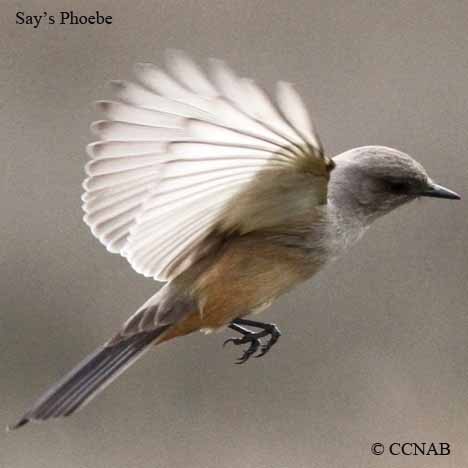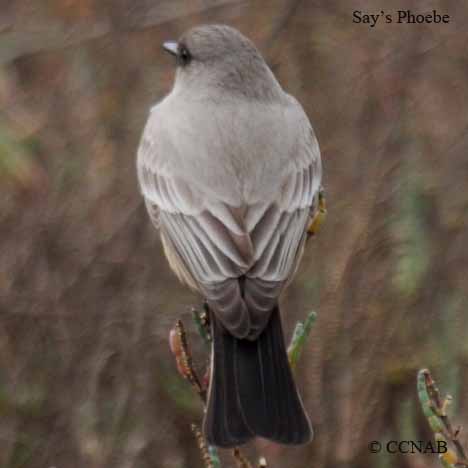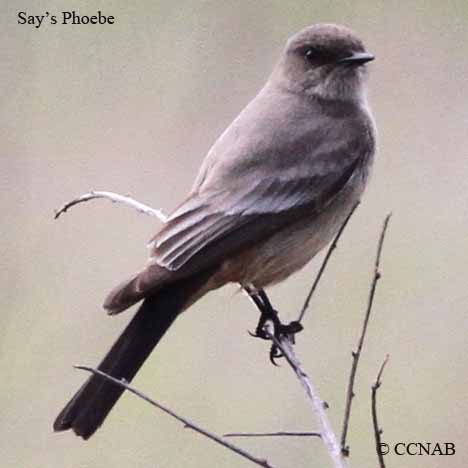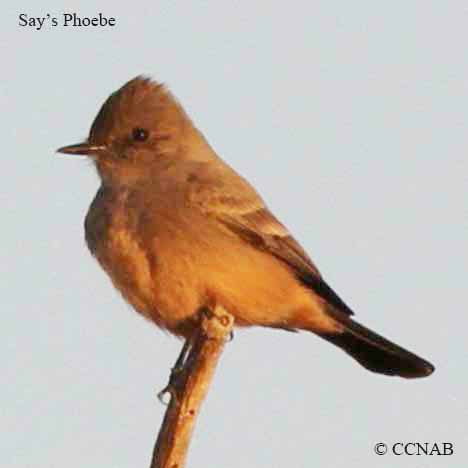North American Bird Search Box
This search box can be used to find bird species using bird's english, french or latin name, or to identify bird by its 4 letter Alpha Code
Field Guide for all the Birds of North America
Say's Phoebe
4 Letter (english names) Alpha Code: SAPH (1)
Moucherolle à ventre roux
Sayornis saya
Information, images and range maps on over 1,000 birds of North America, including sub-species, vagrants, introduced birds and possibilities
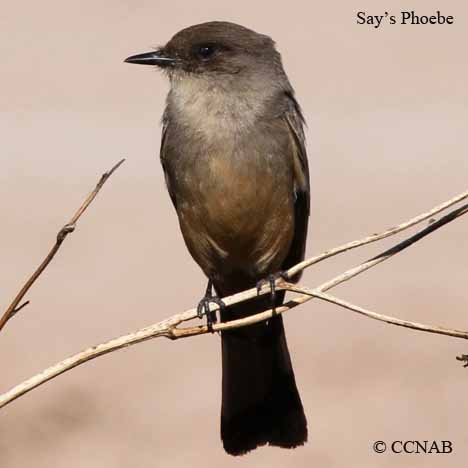
Species: The Say's Phoebe (Sayornis saya) behaves in the same manner and has many of the same habits as its eastern species, the Eastern Phoebe. Both species are apt to nest around older homes, sheds or any other type of structure. It is an insect eater able to catch its prey in the air or hover over plants, picking the insects off the leaves. Unlike the Eastern Phoebe, the Say's Phoebe does not especially require water close by. It can be found in very hot and arid locations.
Distinctions: Both sexes appear similar, grey bodies, including back, head and the upper breast. Dark lores, black wings and tail. Rusty or burnt-orange coloured lower breast and rump. The juvenile is similar to adults.
Voice: Usually, two call notes to their lyrics, similar whistle-type call to a pewee.
Nesting: Four to five white eggs, two broods per year. Nest constructed from grass, weeds, spiderwebs and mud. Nest is attached to the sides of structures, built on shelves or to the side of cliffs or bank ledges.
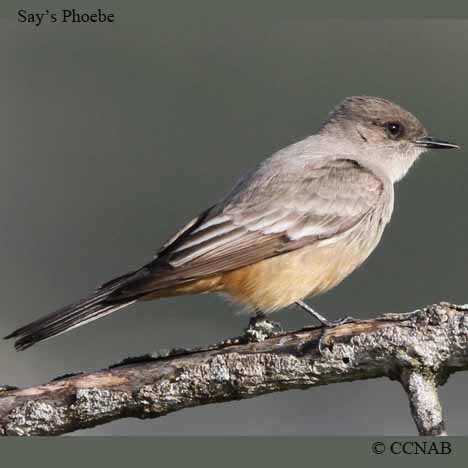
Life, Habitat & Pictures of North American Phoebes
| B L | W W | W | Family | Latin Name |
|---|---|---|---|---|
| 7.5" 19cm | 13" 33cm | 0.75oz 21.3g | Tyrannidae | Sayornis saya |
North American Birds Videos
- Click here
North American Bird Calls
- Click here
- Click here
- Summer
- Year Around
- Winter
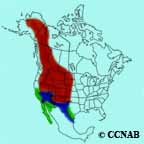
Distribution: The Say's Phoebe prefers a drier climate and it is not uncommon to see it away from water. It is seen throughout the western North American continent where it prefers the mountainous terrain. It is not seen along the Pacific coast but is observed from north-central Alaska to southern California, east to Texas and north to the Dakotas, into Manitoba and across the prairies to northern British Columbia.
Reference to Other Bird Site:
ABA - American Birding Association This site represents an organization that maintains official records of all birds species that have been proven to have been seen inside the perimeters of the North American Continent and the surrounding bodies of water. Regular revised versions are posted to keep the bird list current at all times. This is the list used by all serious birders over their lifetime. You may be aware of the movie called the "Big Year". It was with this list that all the competing birders used in an attempt to set a new record as to how many bird species that could be seen by an individual birder in one calendar year.
